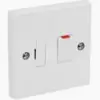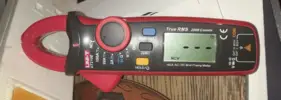I have just purchased a new house and at the rear of the property there is one of those typical outside floodlights with PIR sensor. It doesn't appear to be working and as I have a Blink camera with a floodlight mount, this light already on the property is not needed.
The grey cable comes out of the back of the floodlight and goes into the wall, but there is no trace of the cable anywhere else's, and so I have no idea where it is wired to.
Is there any way to find out, and am I able to cut the cable and re-render of it to fill the hole, in effect burning the bare end of the cable in the wall?
Photos in this post: https://www.diynot.com/diy/threads/outside-pir-floodlight-question.634492/page-2#post-5812430
The grey cable comes out of the back of the floodlight and goes into the wall, but there is no trace of the cable anywhere else's, and so I have no idea where it is wired to.
Is there any way to find out, and am I able to cut the cable and re-render of it to fill the hole, in effect burning the bare end of the cable in the wall?
Photos in this post: https://www.diynot.com/diy/threads/outside-pir-floodlight-question.634492/page-2#post-5812430
Last edited:





